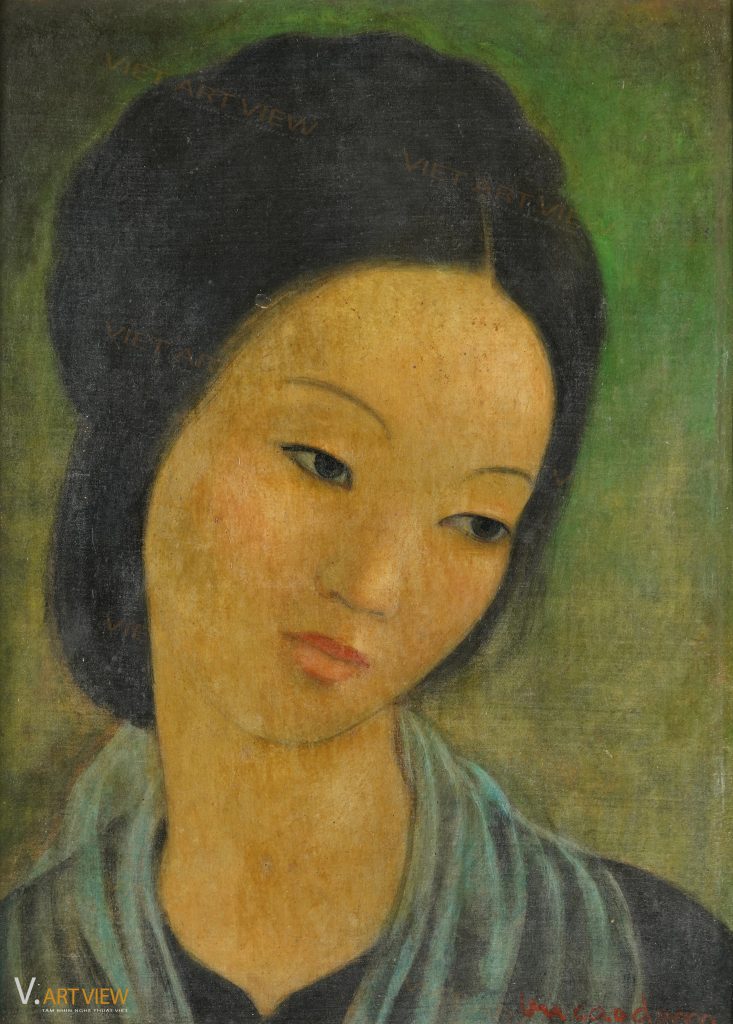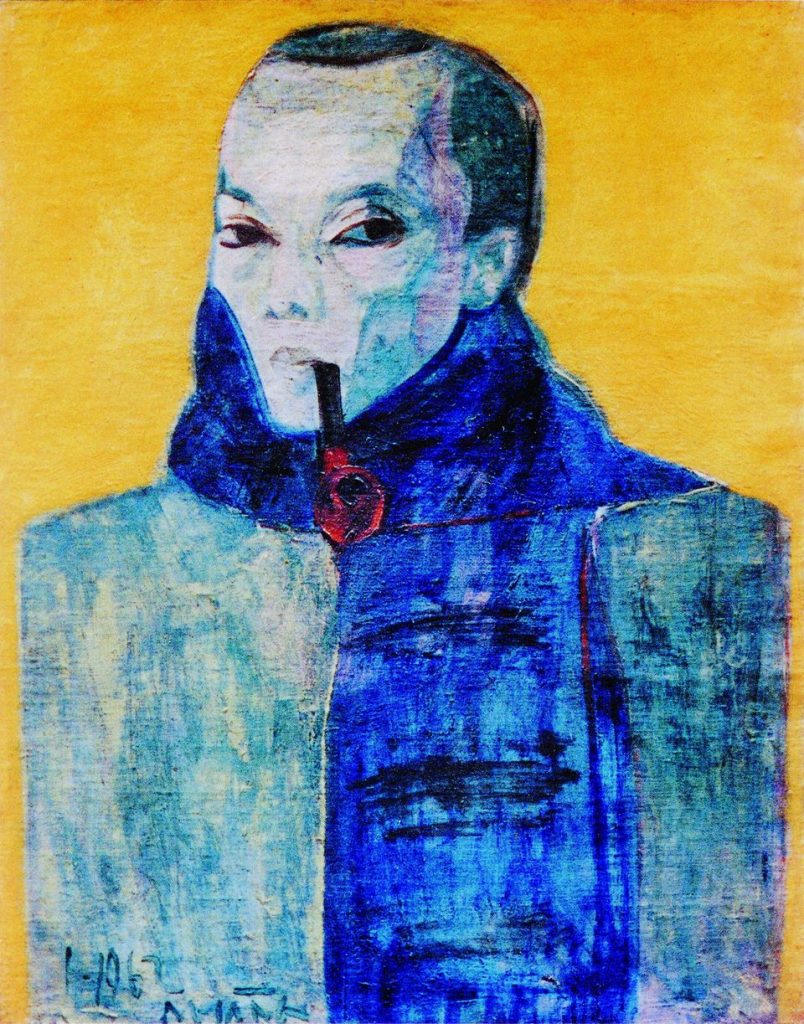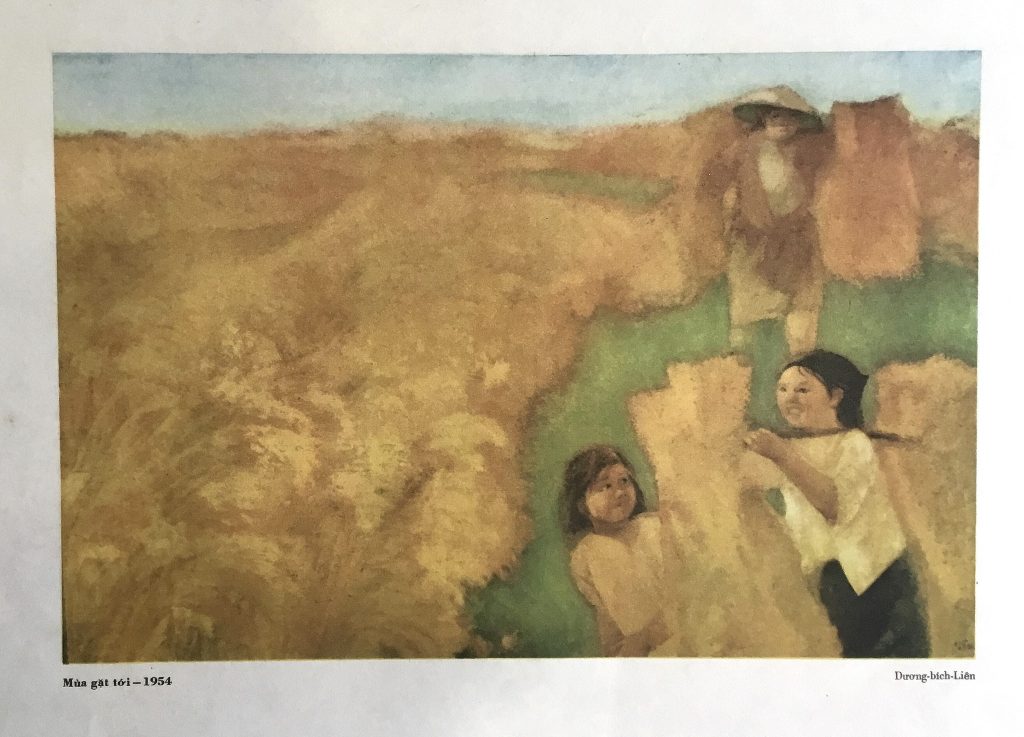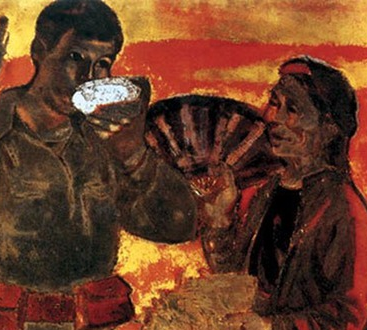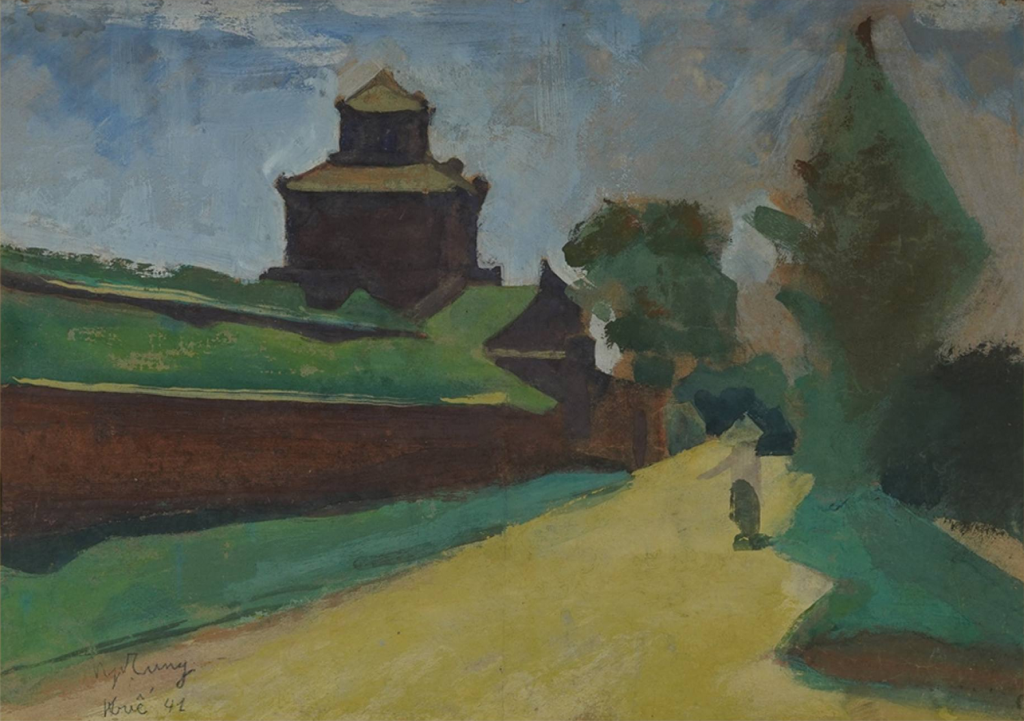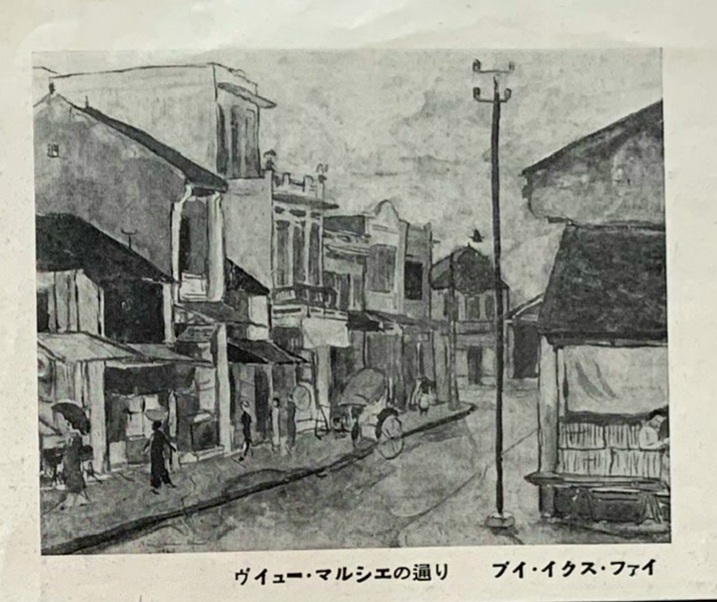
According to Wikipedia, the introduction to artist Trần Văn Thọ of Silpi Magazine, India, book 3 – Pages 117 — 1948 has the passage: “Trần Văn Thọ is a well–known artist of Hanoi and seems to be quite at home in any style. His paintings on silk have all the delicacy of a skilful and artistic brush; his gouache paintings are harmonious, his water colours full of atmosphere…”
In the quote ‘Vietnamese Modern Art’, author Nguyễn Văn Phương, by Fine Arts Academic — Ministry of National Education of the Republic of Vietnam, published in 1962, wrote: “The French came here to popularize a classical Western art, since the establishment of the Hanoi School of Fine Arts in 1923 by several cultural ambassadors: painter Tardieu, sculptor Jonchère and Inguimberty, a decorative artist…”. The book also mentions Lê Phổ, Mai Trung Thứ, and Vũ Cao Đàm as the first generation artists of Western artistic trends.
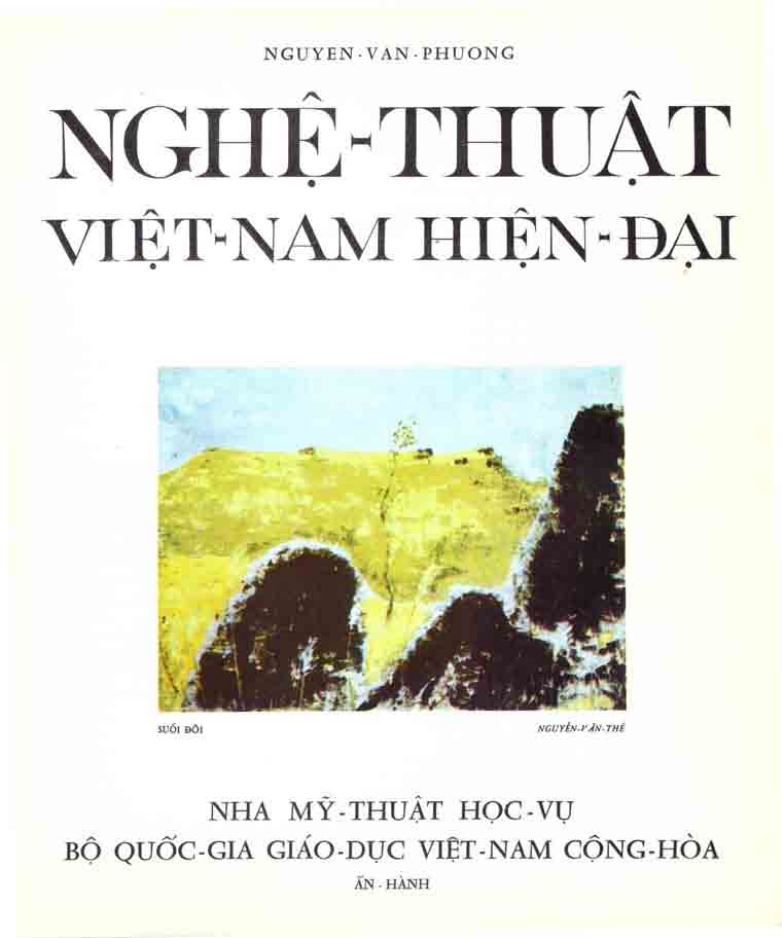
The book ‘Nghệ thuật Việt Nam hiện đại’ (Modern Art of Vietnam) by Nguyễn Văn Phương
Next is the passage: “Up until about the middle of the twentieth century, the national liberation struggle marked an important mark in the development of Vietnamese painting. The Independent atmosphere has completely renovated the artist’s creative thoughts, especially the artists who matured in that glorious victory. Since the second half of the twentieth century, revolutionary thoughts in art took shape:
– From the wild back to the city, Tạ Tỵ displayed cubist paintings in Hanoi and a number of works such as ‘Yellow, Violet’; ‘Exist’; ‘Silver Afternoon’, it caused a lot of reaction in the art community, although Cubism was established in Europe in 1907.
– In Saigon, Tú Duyên displays woodblock prints on silk with themes in folk songs, in Kiều and imitated Tết paintings, which were warmly encouraged by the public.
– Trần Văn Thọ displayed silk paintings many times in Hanoi and Saigon, determined to promote the thought of ‘returning to nature’, against the life of machine slavery.”
Based on the above documents, (almost) certainly, artist Trần Văn Thọ graduated from Fine Arts College of Indochina, but we don’t know the exact year. In the book ‘Urban Fine Arts of Saigon, Gia Định 1900-1975’, Uyên Huy wrote: “The old professors of the school mostly graduated from Fine Arts College of Indochina and from abroad, such as: Lê Văn Đệ, Nguyễn Văn Long, Lưu Đình Khải, Nguyễn Văn Anh, Đan Hoài Ngọc, Nguyễn Văn Quế, Đỗ Đình Hiệp, Lê Yên, Trần Văn Thọ, Trần Dụ Hồng… Those who learned from abroad such as Bùi Văn Kỉnh, Dương Văn Đen, Đỗ Thị Tố Oanh…”

Artist Trần Văn Thọ (1917-2004)
Trần Văn Thọ was born in 1917 in Bắc Ninh. Since 1954, he has specialized teaching in silk painting at the National School of Fine Arts – Saigon College. Before 1954, he and artist Nguyễn Văn Quế (1914–?) went to Cambodia, to live and teach. Considering the age, considering the similarities when living together in Cambodia for many years, perhaps Trần Văn Thọ studied a few courses after Nguyễn Văn Quế. Is it that his name ‘missed’ in the original list of the Indochina Fine Arts College as in the case of artist Trần Hà (1911–1974), student of course VI (1930–1935) and some other artists.
Not only that, his fine art career has been recognized for a long time, along with Tạ Tỵ, Tú Duyên… In a magazine published in Saigon before 1975, there was an article ‘Thủy thái họa trên lụa’ (the medium that many transparent layers of color laid on silk) by Trần Văn Thọ. In the article, he mentioned the history, technique, shaping, and beauty of thủy thái painting on silk. This is also the art genre that he loves and pursues.
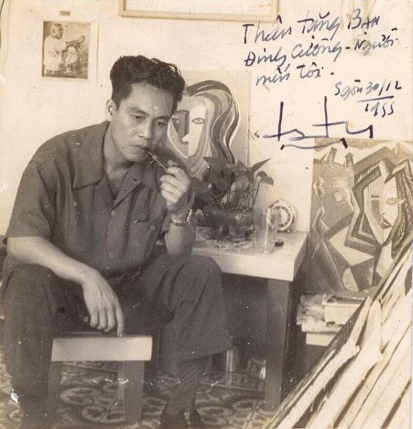
Photo of artist Tạ Tỵ
Trần Văn Thọ was born in Bắc Ninh, so his works are imbued with the sentiments of his hometown with diverse themes of ancient Vietnamese social scenes. He often depicted the majestic mountainous landscape of the northern border region; or scene of daily life such as herding buffaloes, kid herding; Portraits with nudes, young woman, children, mother and child.
In particular, the image of ‘liền anh, liền chị’ (brother, sister or young man, young woman in ‘quan họ’ Bắc Ninh culture) with costume of folk festivals in ‘Kinh Bắc’ region such as Lim was reproduced very vividly in his painting.
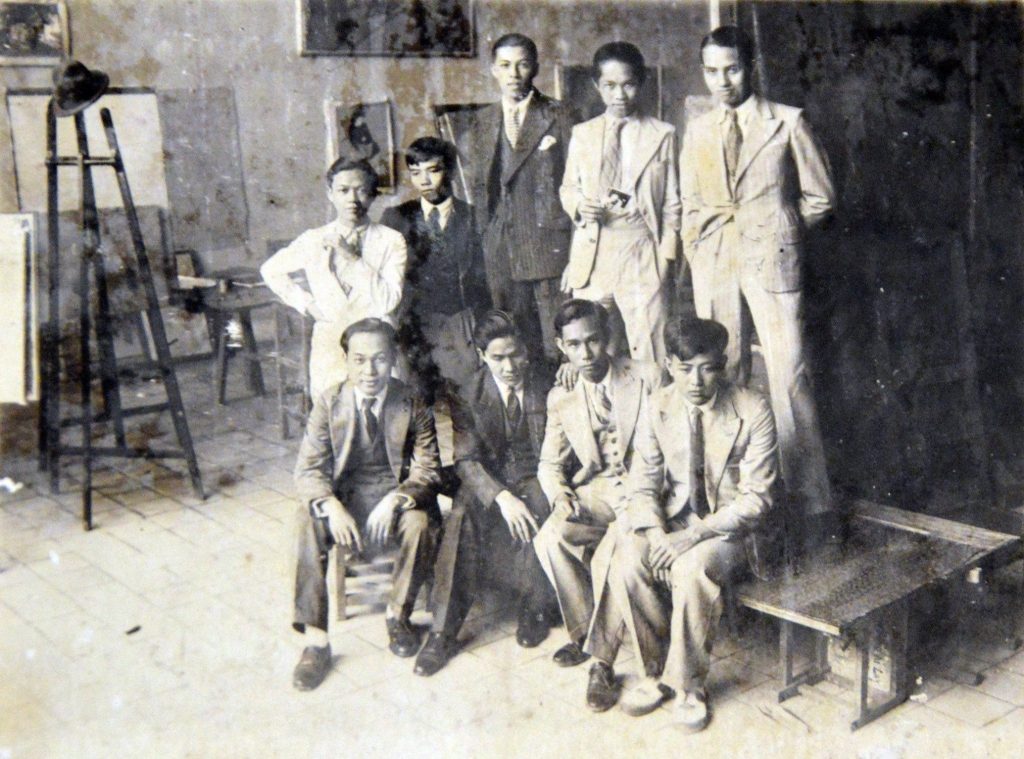
Trần Hà (second from the left) along with students of Fine Arts College of Indochina. Another person who can be identified with certainty is Lưu Đình Khải (standing on the far right), course I
Trần Văn Thọ’s visual language is impressive from lines, figures seems to be ‘gliding’ to the rhythm, from the sound of quan họ folk songs in Kinh Bắc region of his hometown. Basically, the ‘color’ system in all of Trần Văn Thọ’s works is quite clear. In his works with themes: festivals, singing and dancing, village festivals, portraits, he used hot colors with original vibrant colors or deep browns. Paintings with the theme of landscapes, flowers (usually white lotus) will be blue with green, gentle and dreamy.
According to the autograph, Trần Văn Thọ’s ‘Scenery of Đồng Văn’ is one of his oldest paintings ever introduced. On the surface of the painting written ‘ĐỒNG VĂN – 29.2.39’, (maybe he was a bit mistaken because when we checked the calendar, February 1939 only had 28 days) accurately and in detail the time Trần Văn Thọ created the painting. Not only that, there is also a seal of the Confucian writing and the name ‘TRẦN VĂN THỌ’ stamped directly on the surface of the painting. This is one of the rare data on an old painting.
The painting depicts the mountainous landscape of Đồng Văn in the late 30s with a wide layout, majestic mountains, winding and winding trails, woodcutters carry firewood, horses carry goods, the roofs of stilt houses are far away, and blue smoke is in the air. The whole painting is like a poem with figures, depicting the majestic, lyrical and poetic image of Đồng Văn, the highland border of Hà Giang.

Trần Văn Thọ (1917-2004) ‘Scenery of Đồng Văn’ 1939. Watercolor on paper, 33.5×60.5 cm
Trần Văn Thọ has delicately handled every detail, even if it’s very small, that makes the work have a certain meticulousness. The airy, soaring feature of the foreground vegetation; meticulous sketches on tree trunks; sparse and dense strokes with emotional on the patches of green with a slight blue tint, very typical of Trần Văn Thọ’s color gamut. The most special here is the blend of ‘old pigments’ drawn on paper, after nearly 90 years with the resonance of shrinkage and moisture of Vietnam’s hot and humid climate has given the surface of the painting an old, very old spirit of time. Only time can create that ‘color of time, color of that old spirit’. This will really ‘deep and clear’, touch the ‘visual and emotional consciousness’ if we admire the painting slowly, directly.
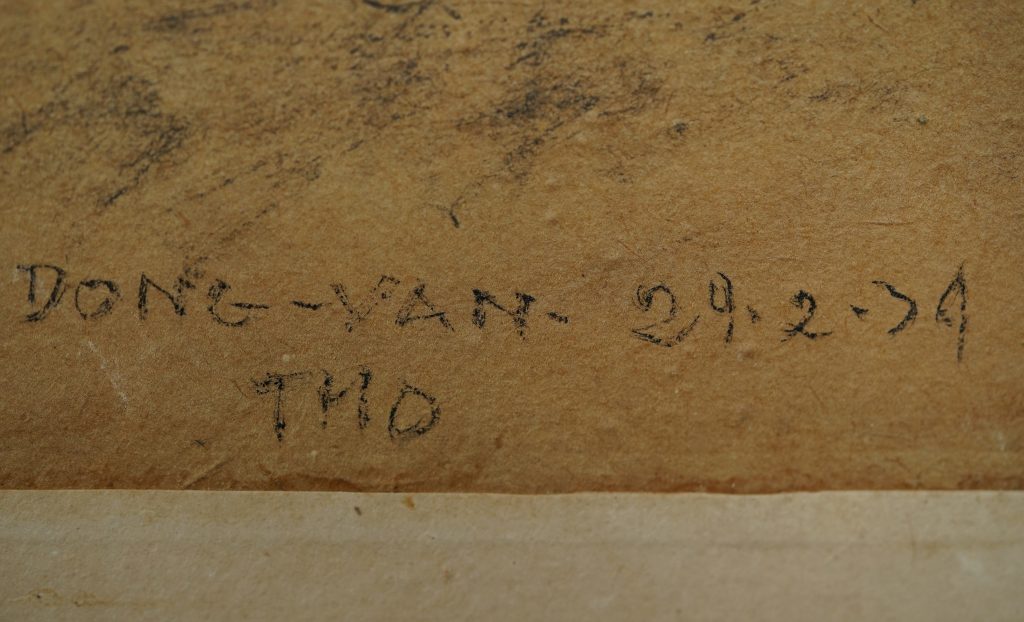
Trần Văn Thọ worked a lot in silk, paper, and a few of lacquer. Currently, his paintings are still regularly introduced to the public on auction floors in Europe and Asia every session. This proves his persistent, continuous creativity. Until now, the document about Trần Văn Thọ’s private life is still an interesting secret that we need to find. One day there will be certain lines: Artist Trần Văn Thọ (1917–2004), course he had studied at the Indochina Fine Arts College, who studied with him at that time, so that his name can be well–deserved honor along with the beautiful paintings he created all his life…
At that time, in a place far away, he will smile gently, serenely…
By Viet Art View
Copyright belongs to Viet Art View


